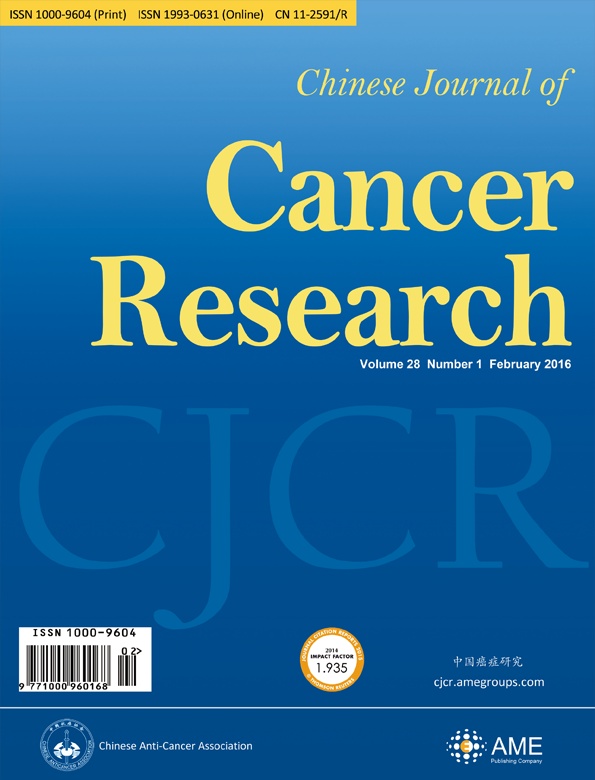高危局限性和局部晚期前列腺癌症根治性前列腺切除术后辅助激素治疗:中国首次多中心观察性研究
IF 7
2区 医学
Q1 ONCOLOGY
引用次数: 6
摘要
目的联合雄激素阻断(CAB)在中国男性癌症(PCa)患者中的应用潜力尚未得到广泛探讨。因此,本研究评估了高危局限性和局部晚期前列腺癌患者在根治性前列腺切除术(RP)后接受辅助激素治疗(HT)的2年前列腺特异性抗原(PSA)复发率和生活质量(QoL)。方法这项在中国18个中心进行的前瞻性、多中心、观察性研究纳入了高危因素(术前PSA>20 ng/mL或Gleason评分>7)或局部晚期前列腺癌患者。根据研究者在常规临床实践中的决定,在RP后给予不同的佐剂HT。评估基线和术后特征与复发率的关系。记录12个月和24个月时PSA复发率和癌症治疗-前列腺功能评估(FACT-P)生活质量评分。Kaplan-Meier分析用于构建随访期间PSA复发率。结果共招募189例患者(平均年龄:66.9±6.5岁),其中112例(59.3%)患者术前血清PSA>20ng/mL。术后病理进展最高的是从临床T2期(cT2)到病理T3期(pT3)(43.9%)。大多数患者(66.1%)接受CAB作为辅助HT,中位持续时间为20.0个月。CAB治疗的患者复发率最低(15.2%),其次是促黄体生成素释放激素激动剂(LHRHa)(16.1%)和抗雄激素(19.0%),各组之间无显著差异。在我们的研究中,基线或术后特征均与PSA复发无关。119名接受治疗12个月以上的患者的24个月FACT-P生活质量评分显示,与接受治疗≤12个月的患者相比,有显著改善。结论与辅助抗雄激素(AA)或LHRHa治疗相比,RP后CAB辅助治疗在中国局限性和局部晚期前列腺癌高危患者中显示出2年PSA复发率降低的趋势。与短期HT治疗相比,进一步的长期治疗(>12个月)显著改善了生活质量,这表明长期CAB治疗在改善生活质量方面的有益效果。本文章由计算机程序翻译,如有差异,请以英文原文为准。
Adjuvant hormone therapy after radical prostatectomy in high-risk localized and locally advanced prostate cancer: First multicenter, observational study in China
Objective Potential of combined androgen blockade (CAB) has not been explored extensively in Chinese males with prostate cancer (PCa). Therefore, this study evaluated the 2-year prostate-specific antigen (PSA) recurrence rate and quality of life (QoL) in patients with high-risk localized and locally advanced PCa receiving adjuvant hormone therapy (HT) after radical prostatectomy (RP). Methods This prospective, multicenter, observational study conducted in 18 centers across China enrolled patients with high-risk factor (preoperative PSA>20 ng/mL or Gleason score >7) or locally advanced PCa. Different adjuvant HT were administered after RP according to investigator’s decision in routine clinical practice. Relationship of baseline and postoperative characteristics was assessed with recurrence rate. PSA recurrence rate and Functional Assessment of Cancer Therapy-Prostate (FACT-P) QoL scores were recorded at 12 months and 24 months. Kaplan-Meier analysis was used to construct the PSA recurrence rate during follow-up. Results A total of 189 patients (mean age: 66.9±6.5 years) were recruited, among which 112 (59.3%) patients showed serum PSA>20 ng/mL preoperatively. The highest postoperative pathological advancement noticed was from clinical T2 (cT2) to pathological T3 (pT3) (43.9%) stage. The majority of the patients (66.1%) received CAB as adjuvant HT, for a median duration of 20.0 months. The least recurrence (15.2%) was noticed in patients treated with CAB, followed by those treated with luteinizing hormone-releasing hormone agonist (LHRHa) (16.1%), and antiandrogen (19.0%), with non-significant difference noted among the groups. None of the baseline or postoperative characteristics was related with PSA recurrence in our study. The 24-month FACT-P QoL score of 119 patients treated for >12 months showed significant improvement above baseline compared with those treated for ≤12 months. Conclusions Adjuvant CAB therapy after RP showed reduction trend in 2-year PSA recurrence rate in high-risk Chinese patients with localized and locally advanced PCa, compared with adjuvant anti-androgens (AA) or LHRHa therapy. Further long-term therapy (>12 months) significantly improved QoL compared to short-term HT therapy, suggesting the beneficial effect of long-term CAB therapy in improving QoL.
求助全文
通过发布文献求助,成功后即可免费获取论文全文。
去求助
来源期刊
自引率
9.80%
发文量
1726
审稿时长
4.5 months
期刊介绍:
Chinese Journal of Cancer Research (CJCR; Print ISSN: 1000-9604; Online ISSN:1993-0631) is published by AME Publishing Company in association with Chinese Anti-Cancer Association.It was launched in March 1995 as a quarterly publication and is now published bi-monthly since February 2013.
CJCR is published bi-monthly in English, and is an international journal devoted to the life sciences and medical sciences. It publishes peer-reviewed original articles of basic investigations and clinical observations, reviews and brief communications providing a forum for the recent experimental and clinical advances in cancer research. This journal is indexed in Science Citation Index Expanded (SCIE), PubMed/PubMed Central (PMC), Scopus, SciSearch, Chemistry Abstracts (CA), the Excerpta Medica/EMBASE, Chinainfo, CNKI, CSCI, etc.

 求助内容:
求助内容: 应助结果提醒方式:
应助结果提醒方式:


